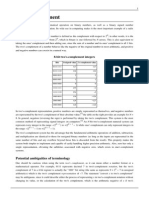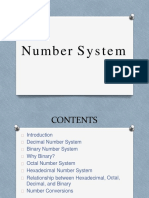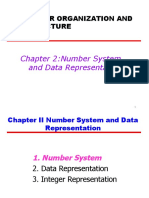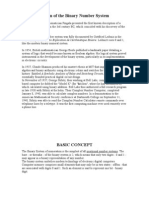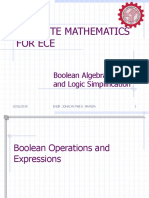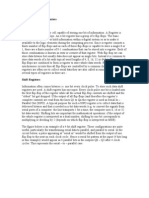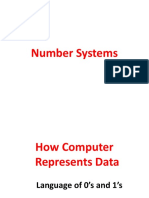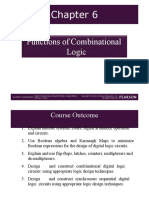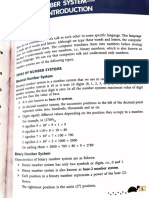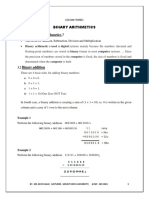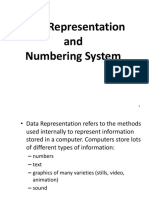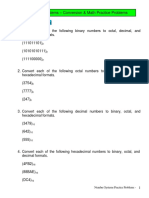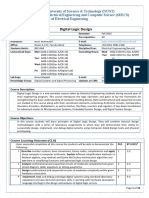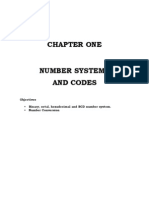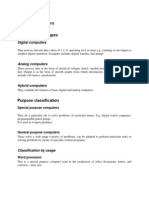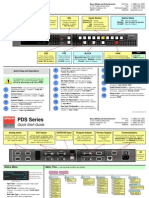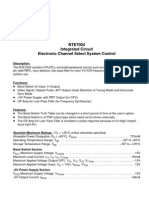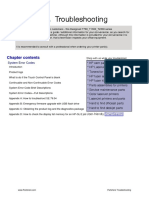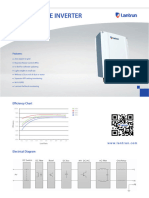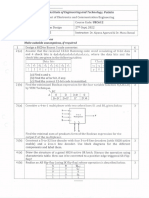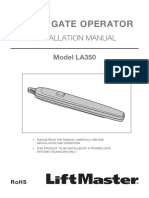CHAPTER ONE
NUMBER SYSTEMS
AND CODES
Objectives
Binary, octal, hexadecimal and BCD number system.
Number Conversion
�Number Systems and Codes
1.1
Binary Numbers
The binary number
digital circuit. Only
High and logic Low.
The binary numbers
1.
system is used to represent the voltage levels of a
two voltage levels present in a digital circuit, logic
The high voltage is +5V and the low voltage is +0V.
represent the logic low as a 0 and the logic high as a
Output dalam desimal
proses dalam binari
Input dalam desimal
A calculator is an example of a digital system. Decimal numbers are
pressed on the keypad, where the input values are converted to binary for
processing, then converts the answers to a decimal value before
displaying them. Number conversion occurs extensively in a digital
circuit. In this chapter, you will learn numbers systems and codes used in
digital circuit. You will also learn how to perform conversion from one
number system to another.
A decimal number can be converted to a binary number by successively
dividing the number by 2 as follows:
87 2 = 43
43 2 = 21
21 2 = 10
10 2 = 5
52=2
22=1
1 2= 0
remainder
remainder
remainder
remainder
remainder
remainder
remainder
1
1
1
0
1
0
1
LSB (right-most bit)
MSB (left-most bit)
Therefore 8710 = 10101112
Note that the first remainder becomes the most significant bit (MSB). The
last remainder becomes the least significant bit (LSB).
A binary number is converted to a decimal number by summing together
the weights of various positions in the binary number which contain a 1.
For example, 10101112 = 8710.
�Number Systems and Codes
MSB
=
=
=
LSB
26
25
24
23
22
21
20
Bit Weights
binary number
24
16
+
+
22 + 21 + 20
4 + 2 + 1
+
26
64
+
8710.
1.2 Octal Number
A decimal number can be converted to an octal number by successively
dividing the number by 8 as follows:
266 8 = 33
33 8 = 4
48=0
remainder 2
remainder 1
remainder 4
LSD (right-most digit)
MSB (left-most digit).
Therefore 26610 = 2148
To convert an octal number to a decimal number, multiply each octal
value by the weight of the digit and sum the results. For example, 4128 =
26610.
=
=
=
MSD
82
81
LSD
80
Octal Digit Weights
(4 x 82 ) +
256
+
26610.
(1 x 81) +
8
+
(2 x 80)
2
Octal Number
�Number Systems and Codes
Each octal digit can be represented by a 3-bit binary number as shown
below:
Octal Digits
0
1
2
3
4
5
6
7
3-bit Binary number
000
001
010
011
100
101
110
111
Conversion from octal to binary is very straightforward. Each octal digit is
replaced by 3-bit binary number. For example, 4728 = 100 111 0102.
4
100
111
001
Octal number
Binary number
A binary number is converted into an octal number by taking groups of 3
bits, starting from LSB, and replacing them with an octal digit. For
example, 110101102 = 3268.
011
010
110
Binary number
Octal number
1.3 Hexadecimal Number
The hexadecimal number uses base 16. It uses the digits 0 through 9 plus
the letters A, B, C, D, E and F. The letter A stands for decimal 10, B for
11, C for 12, D for 13, E for 14 and F for 15.
Hexadecimal
0
1
2
3
4
Decimal
0
1
2
3
4
Binary
0000
0001
0010
0011
0100
�Number Systems and Codes
5
6
7
8
9
A
B
C
D
E
F
5
5
6
7
8
9
10
11
12
13
14
15
0101
0110
0111
1000
1001
1010
1011
1100
1101
1110
1111
A decimal number can be converted to hex number by successively
dividing the number by 16 as follows:
423 16 = 26
26 16 = 1
1 16 = 0
remainder 7
remainder 10
remainder 1
LSB
A
MSB
Therefore 42310 = 1A716
To convert a hex number to a decimal number, multiply each hex value
by the weight of the digit and sum the results. For example, 1A716 =
42310.
=
=
=
MSD
82
81
LSD
80
Hex Digit Weights
(1 x 162 ) + (10 x 81) +
256
+
160
+
42310.
Hex Number
(7 x 80)
7
Each hex digit can be represented by a 4-bit binary number as shown
above. Conversion from hex to binary is very straightforward. Each hex
digit is replaced by 4-bit binary number.
�Number Systems and Codes
6
For example, 1A716
1
1 1010 01112.
1010
0111
A binary number is converted into an octal number by taking groups of 4
bits, starting from LSB, and replacing them with a hex digit. For example,
110101102 = 3268.
For example, 101111110101102 = 2FD616.
10
1111
1101
0110
1.4 BCD Code
Conversions between decimal and binary can become long and
complicated for large numbers. For example, convert 87410 to binary. The
answer is 11011010102, but it takes quite a lot of time and effort to make
this conversion. We call this straight binary coding.
The Binary-Coded-Decimal (BCD) code makes conversion much easier.
Each decimal digit, 0 through 9, is represented with a 4-Bit BCD code as
shown below. The BCD code 1010, 1011, 1100, 1101, 1110 and 1111
are not used.
Decimal Digit
0
1
2
3
4
5
6
7
8
9
BCD Code
0000
0001
0010
0011
0100
0101
0110
0111
1000
1001
Conversion between BCD and decimal is accomplished by replacing a 4bit BCD for each decimal digit. For example, 87410 = 1000 0111 0100BCD.
�Number Systems and Codes
8
7
4
1000 0111 0100
7
decimal number
BCD code
BCD is not another number system like binary, octal, decimal and
hexadecimal. It is in fact the decimal system with each digit encoded in its
binary equivalent. A BCD code is not the same as a straight binary
number. For example, the BCD code requires 12 bits, while the straight
binary number requires only 10 bits to represent 87310.
87410 =
87410 =
11011010102
1000 01110100BCD
binary
BCD
A BCD code is converted into a decimal number by taking groups of 4
bits, starting from LSB, and replacing them with a BCD code. For
example, 1100101111000 BCD = 197810
1 1001 0111 1000
1
9
7
8
BCD code
decimal number
�Number Systems and Codes
8
Exercises
1.
Convert decimal 23410 to
a. binary
b. BCD
b. octal
c. hexadecimal
2.
Convert binary 10010111012 to
a. decimal
b. octal
c. hexadecimal
d. BCD
3.
Convert hexadecimal ABF216 to
a. decimal
b. binary
c. octal
d. BCD
4.
Convert BCD 10010100100110001BCD to
a. decimal
b. octal
c. hexadecimal
d. binary
5.
Convert number octal 5268 to
a. decimal
b. BCD
c. hexadecimal
d. binary


